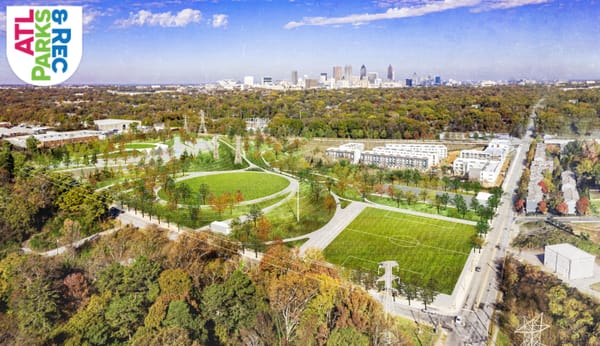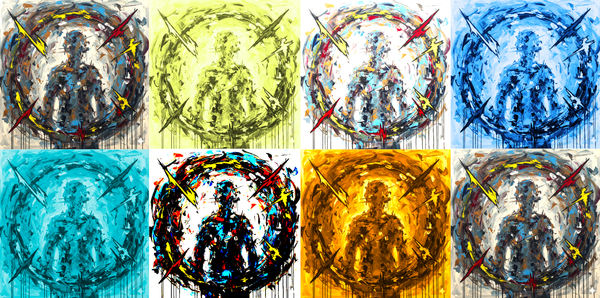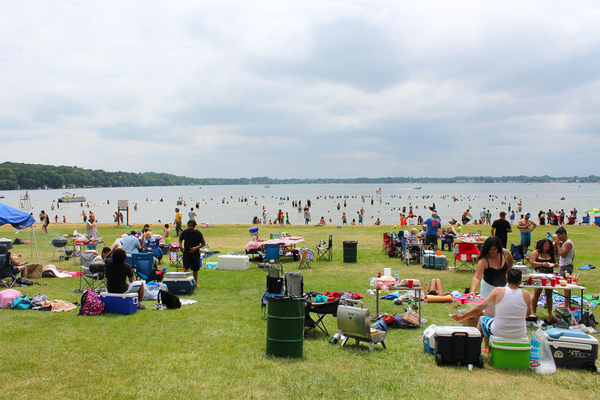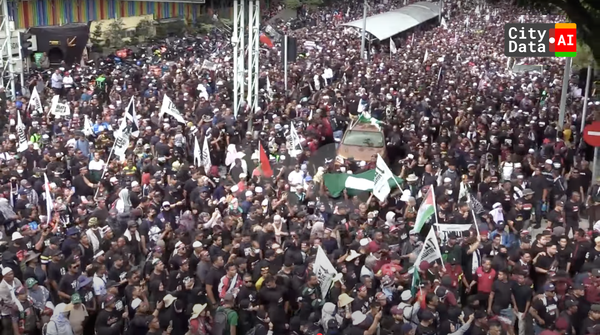Mobility Trip Patterns for Greater Córdoba in Argentina
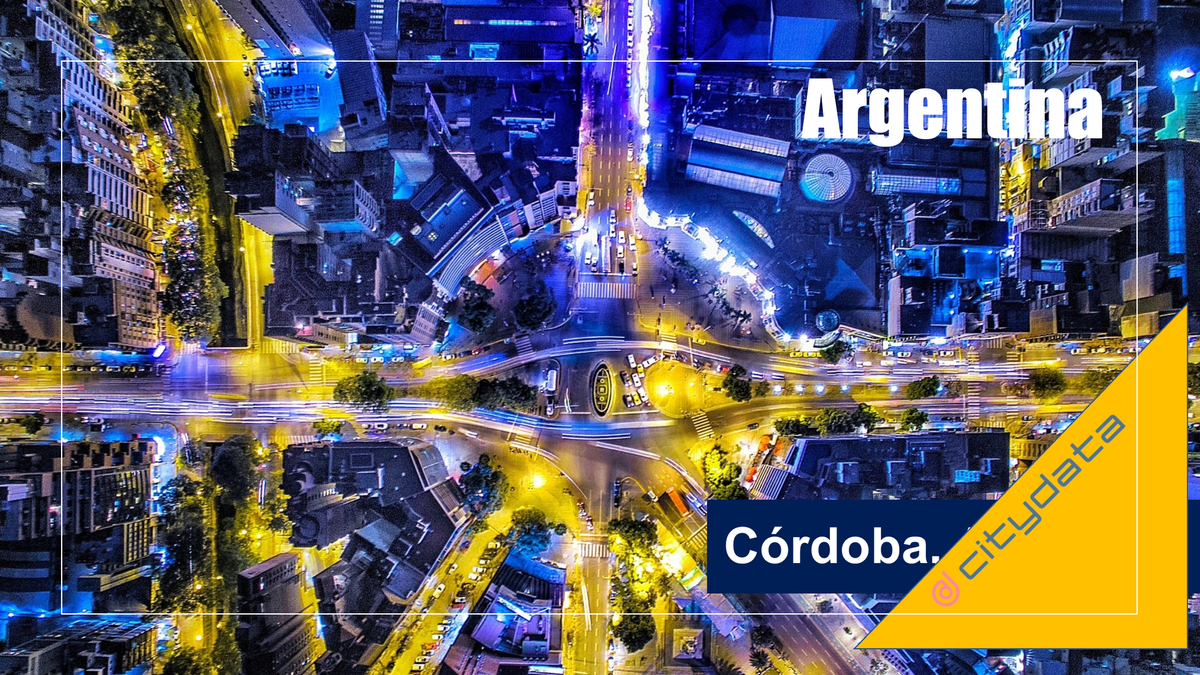
This blog post is published in both English and Spanish.
ESPAÑOL: Esta entrada de blog se adentra en los datos de movilidad y los patrones de movimiento de disparo salto para la Ciudad de Córdoba, la segunda ciudad más grande de Argentina. Puede solicitar los datos de movilidad a los que se hace referencia en esta publicación de blogcon nosotros en business@citydata.ai
ENGLISH: This blog post delves into the mobility data and trip hop movement patterns for the City of Córdoba, the second largest city in Argentina. You may request the mobility data referenced in this blog post by reaching out to us at business@citydata.ai
Sign up for our webinars to learn from our data scientists and geospatial experts. They will show you how geospatial intelligence can be used in the most cost-effective way to measure and analyze movement patterns.
ESPAÑOL
CITYDATA provee datos de movilidad actualizados, precisos, anonimizados y de crowdsourced para aproximadamente 296.500 dispositivos mensuales del área metropolitana del Gran Córdoba. Con los cambios en los comportamientos de las personas debido a COVID-19, los municipios, las agencias de transporte, las compañias y los investigadores académicos necesitan un baseline confiable para medir las variaciones en los patrones de movilidad a lo largo del tiempo.
Septiembre tiende a ser el mejor mes para establecer patrones de movilidad de referencia. Con ese fin, hemos calculado los viajes en Córdoba para el mes de septiembre realizados por 95.000 dispositivos que realizaron un total de 1.735.000 viajes. El uso de técnicas de Machine Learning, permitió ampliar la muestra para representar 18M de viajes hechos por los ciudadanos y visitantes Córdoba.
Para una mejor interpretación de los resultados, el territorio se ha subdividido en 73 zonas de tránsito correspondientes al análisis PTUMA 2010. El video a continuación muestra los patrones de movilidad y viajes sobre una cuadrilla de 5m x 5m sobre todo el territorio, animando series de tiempo a través de la herramienta de visualización Kepler.gl.


Viajes Inter e Intrazonales
El siguiente mapa representa la intensidad de los viajes entre las 73 zonas de tránsito. Cada línea representa la interrelación entre el par de zonas. La colección de líneas muestra la red de viajes que conectan origen con destino, llamados viajes interzonales, mientras que los viajes que permanecen dentro de la zona, viajes intrazonales, están representados por círculos.

Viajes Intrazonales
Los viajes dentro de una sola zona se clasifican como “Viajes intrazonales”. De un vistazo, la zona 27 destaca del resto, es la zona con más viajes internos y a su vez se conecta con el centro de la ciudad. La Zona 23 también exhibe una gran cantidad de viajes internos y con sus áreas vecinas. Las zonas 7 y 43 también se destacan como epicentro de los viajes intrazonales para con el resto de la ciudad
Viajes Interzonales
Los viajes entre zonas se clasifican como “Viajes Interzonales”. La mayor intensidad de viajes interzonales se observó entre las zonas 23-24 y entre las zonas 7-5 cercanas al centro de la ciudad. Las interacciones entre las zonas 14-56 y 48-50 también se destacaron en términos de alto volumen. Otras combinaciones de pares de zonas que vale la pena mencionar con interacciones de intensidad media son 15-14, 16-15, 18-19-21, 33-34-35, 38-37, 43-44, 27-30, 27.31.
Las áreas suroeste y noreste tienen poco movimiento interno y movimiento limitado con el resto de la ciudad. En contraste, el corredor noroeste-sureste parece ser muy prominente. La centralidad y radialidad de la ciudad se puede apreciar al estudiar las interacciones interzonales en el centro y sus salidas hacia la periferia, principalmente con la zonas noroeste y sureste.
Clasificación por hora del día
Mañana
27, 8, 7, 43 y 15 : Zonas con más viajes que se originan en la mañana

Tarde
5, 7, 8, 9, 43 : Zonas con más viajes con origen en la tarde

Noche
5, 7, 8, 43 y 35 : Zonas con más viajes con origen en la tarde

Madrugada
27, 23, 24, 59 y 15 : Zonas con más viajes con origen en la noche

Observaciones y Conclusiones
Esto nos permite sacar las siguientes conclusiones:
- Los patrones de desplazamiento cambian significativamente durante el transcurso del día
- La gente se desplaza desde las zonas periféricas al centro de la ciudad durante las horas de la mañana, con mayor afluencia desde las zonas noroeste, oeste, suroeste y sur de la ciudad
- Las horas de la tarde son las más concurridas en el centro de la ciudad, con un flujo de personas casi uniforme en todo el centro
- Al llegar a las horas de la tarde y la noche, el movimiento cambia a un patrón radial desde el centro de la ciudad hacia las zonas periféricas, con un énfasis en las zonas del noroeste de la ciudad
- Durante la noche y las primeras horas de la mañana hay muy poca actividad en el centro de la ciudad, pero parece haber más movimiento entre los barrios periféricos del sur/suroeste de la ciudad.
Tabla de datos OD

ENGLISH
CITYDATA holds fresh, accurate, anonymized, crowdsourced mobility data for approximately 296500 devices in the Greater Córdoba metropolitan area measured each month. With the changes in people-behaviors due to COVID-19, municipalities, transportation agencies, real-world businesses, and academic researchers are in need of a reliable baseline for measuring the variations in mobility patterns over time.
<Insert video>
September tends to be the preferred month for baselining mobility patterns. To that end, we have computed the mobility trip hops for Córdoba for the month of September for 95000 devices which exhibited high levels of mobility in the form of 1,735,000 trips. Using machine learning, the sample was scaled up to represent 18M trips made by citizens and visitors to Córdoba.
For a better interpretation of the results, the city has been subdivided into 73 transit zones corresponding to the 2010 PTUMA analysis. The video at the below link shows the mobility patterns and trip hops on a high resolution geohash grid, visualized with a time series animation powered by the open source kepler.gl tool.


Intrazonal and Interzonal Travel
The below map represent the intensity of the trips between the 73 transport zones. Each line represents the collection of all trips between the two transport zones connected by it. The collection of lines shows the network of trips that connect origin with destination, called interzonal trips, while the trips that remain within the zone, intrazonal trips, are represented by circles.

Intrazonal trips
Trips within a single zone are classified as “Intrazonal Trips”. At a glance, zone 27 stands out for the most internal trips that connect with the city center. Zone 23 exhibits a large number of internal neighborhood areas, but it also acts as a bypass corridor to the center of the city. Zones 7 and 43 also stand out as the epicenter of intrazonal trips to the rest of the city
Interzonal trips
Trips between zones are classified as “Interzonal Trips”. The highest intensity of interzonal trips was observed between zones 23-24 and between zones 7- 5 near the city center. The interactions between zones 14-56 and 48-50 also stood out in terms of high volume. Other zone-pair combinations worth mentioning for medium intensity interactions are 15-14, 16-15, 18-19-21, 33-34-35, 38-37 , 43-44, 27-30, 27.31.
The southwest and northeast areas of Córdoba have little internal movement and limited movement with the rest of the city. In contrast, the northwest-to-southeast corridor appears to be very prominent. The centrality of the city can be appreciated by studying the interactions with the northwest zone compared to the southeast zone, with radial movement around the center.
Classification by Hour of Day
Morning Hours
27, 8, 7, 43 and 15 : Zones with the most trips originating in the morning

Afternoon Hours
5, 7, 8, 9, 43 : Zones with the most trips originating in the afternoon

Evening Hours
5, 7, 8, 43 and 35 : Zones with the most trips originating in the evening

Night Hours
27, 23, 24, 59 and 15 : Zones with the most trips originating in the night

Observations and Conclusions
This allows us draw the below conclusions:
- The movement patterns change significantly during the day
- People travel from the peripheral areas to the center of the city during the morning hours with more influx from the northwest, west, southwest and southern parts of the city
- The afternoon hours are the busiest hours in the center of the city with an almost even spread of people flow around the center
- As we get to the evening and night hours, the movement changes to a radial pattern from the center of the city to the peripheral areas, with an emphasis on the northwest parts of the city
- During the night and early morning hours there is very little activity in the city center but there appears to be more movement between the peripheral neighborhoods in the south / southwest parts of the city
OD Data Table

About CITYDATA.ai
CITYDATA.ai provides pattern-of-life mobility data + Ai for smart cities. CITYDATA knows the answers to the questions “how many people are in your city today” and “what are their movement patterns?”.
CITYDATA offers five main data-as-a-service products:
- CITYDASH: on-demand daily mobility insights for global cities across 60 countries
- CITYCHAT: mobile chatbot platform for citizen engagement and data sharing
- CITYFLOW: fleet tracking solution for cities, transportation and enterprise businesses
- CITYWORKS: mobile workforce management solution for cities and businesses
- CITYSDK: an embeddable component for cities to use in their mobile apps
Founded in 2020 in San Francisco, California, CITYDATA provides fresh, accurate, daily insights that are essential for smart city programs, economic development, urban planning, mobility and transportation, tourism, disaster impact analysis, sustainability and resilience.
You can reach the company via email at business@citydata.ai if you’d like to discuss your data needs and use cases. You can also follow the company on Linkedin, Twitter, Facebook, YouTube, and the UniverCity.ai blog to stay updated on the newest innovations in mobility data + Ai.



